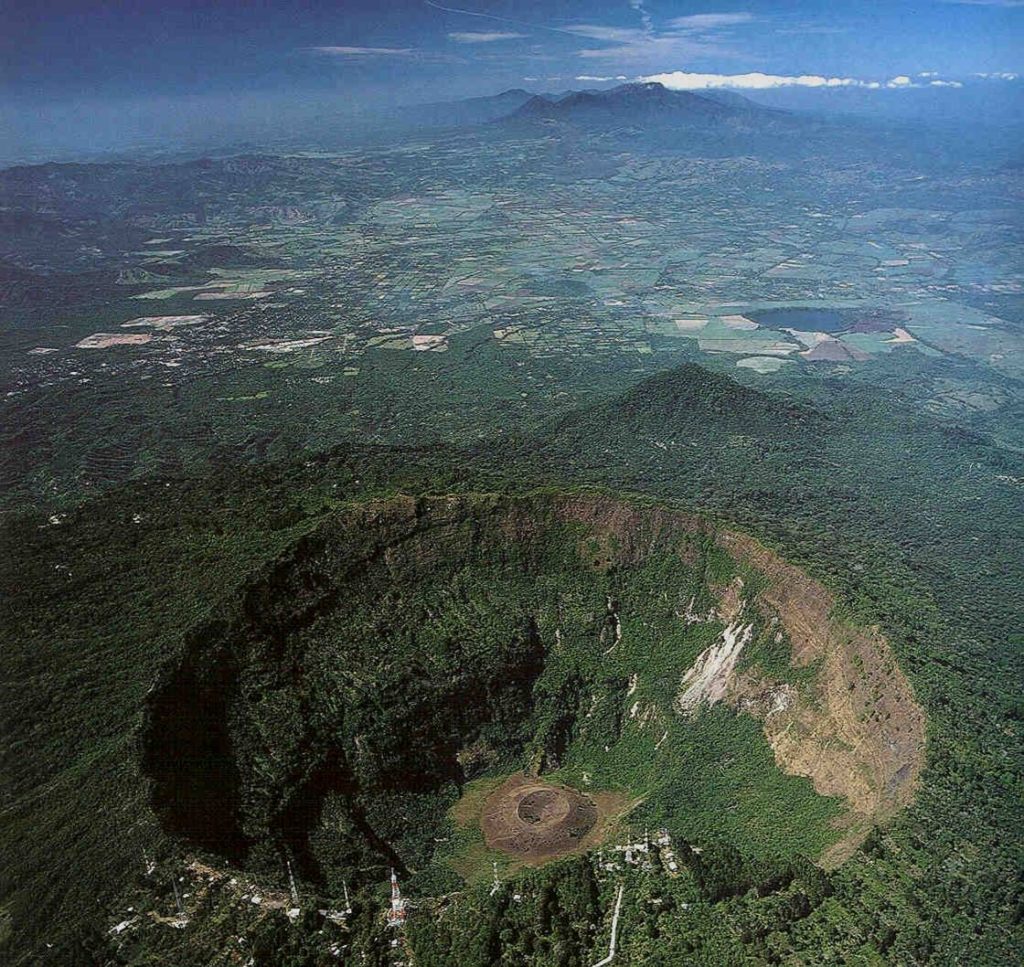Looking to visit “El Boquerón Volcano”? Click here to check some options that will help you organize your travel
San Salvador volcano is a massive stratovolcano immediately northwestwest of El Salvador city. Its modern summit cone is also called the Boqueron stratovolcano. It formed within a 6 km wide caldera left by the collapse of the predecessor volcano about 40,000 years ago. Remnants of the caldera rim form the Picacho and Jabalí peaks.
Boqueron volcano is truncated by a steep-walled, 500 m deep and 1500 m wide summit crater, which formed during a large eruption about 800 years ago. Before the last eruption in 1917, the crater of Boqueron contained a 400 m wide lake, which was replaced by a small, 30 m high young cinder cone, called Boqueroncito, built during the eruption along with a major lava flow on the north flank. Most historical eruptions from San Salvador originated from flank vents.
The San Salvador or Quezaltepeque volcanic center formed in the southern part of the main graben of El Salvador and is dominantly andesitic. Three fracture zones that extend beyond the base of San Salvador volcano have been the locus for numerous flank eruptions, including two that formed maars on the WNW and SE sides. Most of the four historical eruptions recorded since the 16th century have originated from flank vents, including two eruptions in the 17th century from the NW-flank cone of El Playón, during which explosions and a lava flow damaged inhabited areas.
Looking to visit “El Boquerón Volcano”? Click here to check some options that will help you organize your travel
Information taken from Volcanodiscovery:
https://www.volcanodiscovery.com/san_salvador.html


